
Golden Rules…
- Link your CS to your own work…(HL)
- Be sure of the concepts / context within your own work…
- Do not study obscure / limited artists…
- Choose artists from different cultural backgrounds
Putting together the Comparative Study
Formal requirements of the task—HL
- HL students must submit 15 screens which examine and compare at least three artworks, objects or artifacts, at least two of which need to be by different artists. The works selected for comparison and analysis should come from differing cultural contexts.
- HL students must submit 5 screens which analyse the extent to which their work and practices have been influenced by the art and artists examined.
- HL students must submit a list of sources used.
Your Comparative Study should include the following…
- Articulate your understanding through both visual and written forms.
- While the comparative study may include text-based analysis, it may also include…
- diagrammatic and graphic elements such as annotated sketches and diagrams, annotations on copies of artworks as well as other visual organizing techniques (such as flowcharts, relative importance graphs, concept webs and Mind Maps®).
- An introduction to the study should summarize the scope of the investigation from which the focus artworks, objects and artifacts have been selected.
- Students should aim for a balance of visual and written content, and use an appropriate means of acknowledging sources. Students must ensure that their work makes effective use of subject-specific language where appropriate.
For each of the selected artworks (3), objects or artifacts, students are encouraged to:
- Focus their analysis and interpretation of works through consideration of:
- What role does the artist play
- The role and function of the artwork
- Who is/was the audience for the work
- The cultural context (The context for the artist or creator includes: Their culture, their worldview (where they grew up; family values; etc.) Their place; geography (e.g., city, rural, home, traveling) Their “worldview,”religion, beliefs, etc.
What IB looks for in the Comparative Study:
•identification and analysis of the formal qualities of artworks, objects and artifacts
•interpretation of the purpose of the selected artworks, objects and artifacts within the cultural context in which they were created?
•An understanding of the cultural significance of the selected artworks or objects
•identification and critical analysis of the connections/similarities/differences between the selected artworks, objects and artifacts
•information is clearly and coherent in a visually appropriate and legible manner
•consistent use of appropriate subject-specific language?
A working format for your CS:

Introduction
Students summarize the scope of the investigation from which the focus artworks, objects and artifacts have been selected, and any thematic or conceptual framework used to draw the investigation together. eg you may be looking at how artists explore gender roles / identity politics in art…
The artworks, objects or artifacts and their contexts
Students must summarize their research from a range of different sources and present their inquiry into the identification and interpretation of selected artworks, objects and artifacts. They also explain how they have applied a range and combination of critical theories and methodologies to the works. Areas of investigation might include:
- analysis of the cultural contexts of the selected pieces
- identification of the formal qualities of the selected pieces (elements such as shape/form, space, tone, colour, line, texture and principles such as balance, rhythm, proportion, emphasis, pattern, variety)
- interpretation of the function and purpose of the selected pieces (such as the meanings of motifs, signs and symbols used in the work)
- evaluation of the material, conceptual and cultural significance of the pieces and the cultural contexts in which they were created.
Making connections
Students present their comparisons of the different pieces, clearly identifying links between them. These comparisons might include:
- comparing the cultural contexts of the selected pieces
- comparing the formal qualities of the selected pieces
- comparing the function and purpose of the selected pieces
- comparing the material, conceptual and cultural significance of the pieces.
Connecting to own art-making practice (HL only)
Students reflect on their research outcomes and the extent to which their own art-making practices and pieces have subsequently been influenced by artworks, objects, artifacts and their creators examined in the comparative study. These influences and personal connections, which should be evidenced in both visual and written forms, might include:
- cultural context
- formal qualities
- function and purpose
- Materials, conceptual and cultural significance.
When referring to their own artwork and practices, HL students must be sure to identify and acknowledge their own artworks with the same rigorous attention to detail as with images from other sources.
Sources
Students include a list of sources used during the study.
Academic honesty
Every image used within the comparative study must be appropriately referenced to acknowledge the title, artist, date (where this information is known) and the source, following the protocol of the referencing style chosen by the school. When HL students include any images of their own original work, these must also be identified and acknowledged in the same way.
Examples


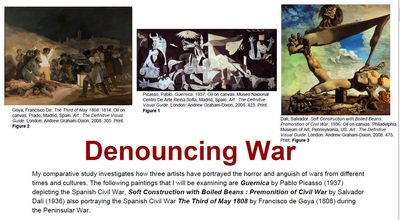
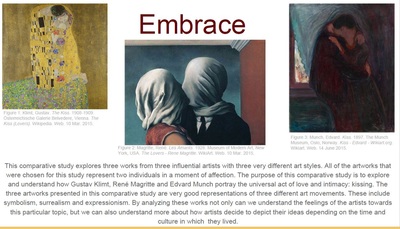
Looking at Art History
Prior Learning
EG – Guernica Task : you have already compared Picasso’s Guernica 1937 to Goya’s Third of May 1808 (1814) and discussed how both paintings deal with the futility of war and violence. The Third of May execution was an indiscriminate killing of civilians by French soldiers in reprisal for a guerrilla attack the previous day, and Guernica was a response to the fascist forces’ bombing of Guernica town in Northern Spain by the German Airforce during the Spanish Civil War in 1937.
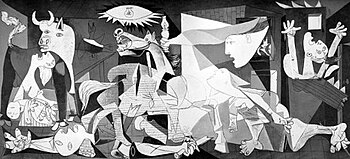
Genres and isms
Essential Art Movements and Styles
Modernism v Postmodernism
Potential Comparisons
1. Kehinde Wiley and Titian

Italian Renaissance painter Titian could be paired with the portrait paintings of contemporary artist, Kehinde Wiley. This is an excellent pairing to begin with as Wiley references the pose and expression of Titian’s The Penitent MaryMagdalen (1555-1565) in his portrait, After Titian’s “The Penitent MaryMagdalen” (2009).

Create a Venn Diagram to show similarities and differences…
Respond with your OWN versions and outcomes…
2. Lisa Brice and Pablo Picasso
Pablo Picasso explored various artistic periods, such as Cubism, The Rose Period, and The Blue Period.
Similar to Picasso’s use of the color blue is contemporary painter and visual artist, Lisa Brice. Her paintings reference her experiences growingup in South Africa, and the time she spent living and working inTrinidad.
Compare and contrast these two artists’ works. Reflect on how Picasso and Brice may see the world differently and communicate their perspectives through their artwork. While Picasso applied the color blue to represent his own sadness, Brice uses the color blue in reference to Trinidad’s carnival traditions. Find some contextual information about each artist. Make inferences from what you learn.

Create your own monochromatic drawings or paintings. Review what a value scale is and how to create various shades and tints using different art materials. Create a monochromatic value scale in the hue of your choice. Choose a color that can communicate emotion or meaning in the same way as Picasso and Brice.
3. Kadir Nelson and Norman Rockwell
Many artists create work reflecting and critiquing the world around them. Art is not simply about technique and aesthetics, but can also have a message and make a profound impact on popular culture.
The work of Norman Rockwell and his illustrations for The Saturday Evening Post have become famous as snapshots of daily life, as well as statements about social and political issues. The Four Freedoms (1943) series of oil paintings refer to President Franklin D. Roosevelt’s 1941 State of the Union speech. The Problem We All Live With (1964) isconsidered to be an iconic image of the Civil Rights Movement.

Contemporary artist and writer, Kadir Nelson, has similarly used his artwork to honor the life of George Floyd and depict the social uprising and protests of 2020. His work has been featured on the cover of TheNew Yorker and Rolling Stone.
Analyze these works individually and write or discuss your own thoughts and opinions about how each piece reflects the political and social climate of its time. You can compare and contrast the two artists’ works. You can research speeches, essays, and articles that speak to the topics the artwork is referencing.

Try to create your own magazine or newspaper illustrations concerning issues you are passionate about. Consider the big topics you discuss with peers, or at home with their family. Think about how you would create a cover illustration to visually represent that topic in a way that is universally understood. You can use photography, magazine clippings, design software, drawing or painting materials, etc. to create a finished cover.
4. Victoria Villasana and Andy Warhol
It’s safe to say that Andy Warhol was obsessed with all things celebrity. He created many iconic prints of notable figures like Marilyn Monroe, Queen Elizabeth, Muhammad Ali, and Michael Jackson, to name a few. These prints and paintings were not realistic depictions, but colorful abstractions unique to Warhol’s process.

Victoria Villasana is a textile artist born in Guadalajara, Mexico. She creates embroidery patterns on top of images. She places her artwork in the streets and has become well known for her rebellious femininity andacute cross-cultural imagery.
Many of Villasana’s embroidered images feature celebrity portraits like David Bowie, Maya Angelou, Frida Kahlo, and Rihanna. The colorful yarn is left uncut and hangs below the image frame.

Both artists utilize image reproductions of celebrities but use their artistic style and vision to alter the images with bright colors, elements of folk art and mixed media approaches. You can compare and contrast the artists’ work and processes. You can creatively alter images of your own political heroes to democratize their exposure, vulnerability and ultimately their worth too…or subvert it and challenge the art establishment
Other possibilities…
Cindy Sherman – Claude Cahun (gender roles)
John Piper – Anselm Kiefer (memories and mythologies of war)
Robert Rauschenberg – Kurt Schwitters (political / dAda / collage)
Paula Rego – Frida Kahlo (biographical / gender challenging)
Jenny Saville – Lucian Freud (body image)
Lucian Freud – Tai Shan Schierenberg
Michael Armitage – Yinka Shonibare (colonialism)
Peter Doig – (magical realism, heritage and colonialism)
Francis Bacon – Jean Michel Basquiat (race and prejudice)
Damien Hirst – Marc Quinn (mortality, fragility and banality of life)
Compare and Contrast Neoclassical/Romantic
The honor and stoicism of Neoclassical art is a great contrast to the emotional turmoil of Romanticism. Compare David’s Oath of the Horatii with Delacroix’s Lady Liberty Leading the People.
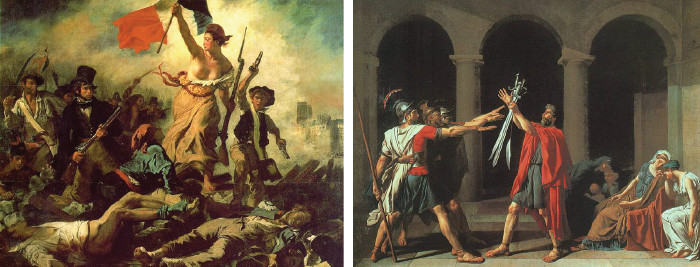
Patriotism and nationalism are key themes in both of these art movements, but this manifested in their art in incredibly different ways.
Impressionism/Post-Impressionism
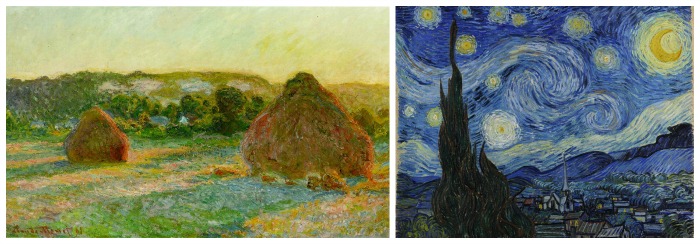
Putting a Van Gogh next to a Monet works as an art comparison because you can really notice the addition of emotion…
Post-Impressionism = Impressionism+Emotion+Bolder + Unrealistic Colors.
Task 1
- Look at exemplar material for comparison
- Choose a combination of artists from the selections above
- Create a Venn Diagram to show similarities and differences
- Share your findings with the class
- Discuss ways forward and how your choice could merge with your practical work…
Task 2
- Related Studies work best if there is a question to focus your research and opinions
- What questions could you use to compare the work of Holbein and Perry? What avenues could you take your research in?
- E.g. Does Art reinforce gender stereotypes or challenge them? Comparing the work of Hans Holbein (The Ambassadors) and Grayson Perry (The Adoration of the Cage Fighters)
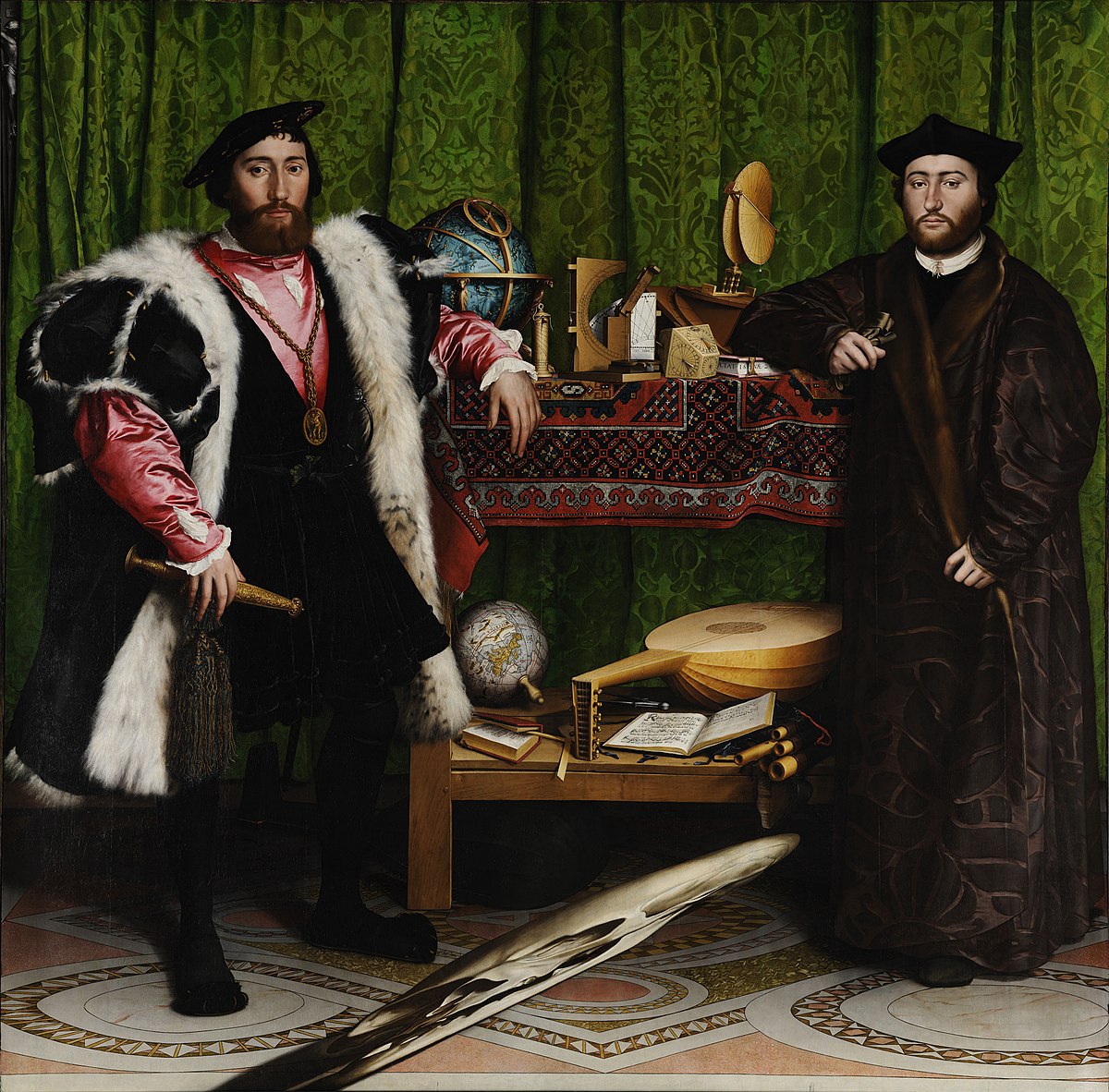
Hans Holbein The Ambassadors 1533

- How are the genders represented in each painting?
- How does this fit in with the context / time period?
- How will they be viewed in the future, e.g. look at how Holbein’s work is viewed now vs when it was originally painted vs how well Perry’s will be viewed in the future
- Does the medium affect the artwork – e.g. Perry’s is a tapestry, traditionally female past time? Holbein was a superstar painter at the time…
- What gender is THE ARTIST?
- Explore the male gaze vs gender identity
- Laura Mulvey The Male Gaze
- Judith Butler Gender Trouble
- Simone De Beauvoir The Second Sex
- Ensure you include pertinent quotes from key texts
- The Guardian – Grayson Perry
- cultural context
- formal qualities
- function and purpose
- Materials, conceptual and cultural significance.
Writing Support



